Many want to stand and walk after a stroke. Of course, this is critical in giving someone more independence. However, standing and walking is also important to prevent deconditioning, maintain joint health, and prevent postural abnormalities associated with prolonged sitting. So, needless to say, I am more than just slightly passionate about helping people “get back on their feet”.
All that being said, some people are so eager to start walking, that they develop what we call compensatory strategies. Compensatory strategies are when someone learns how to rely heavily on the uninolved arm and and leg for movement. To prevent this or to “unlearn” this, I have put together a step by step guid to relearning who to walk after a stroke. I recommend starting with Walking after a stroke (early stage).
Once you have a solid foundation, here is the next progression:
How do you relearn how to stand and walk after a stroke?
To have the greatest success during each of your therapy sessions, I recommend you break each session into three parts. Starting with mat exercise, followed by seated exercises, and finally standing.
Mat exercises
Mat exercises are a great starting point for every therapy session. The goal should be to “prepare” the body for whatever functional activities you intend to practice during that session. In this case, the mat exercises are intended to prepare the body for standing balance retraining and walking. Two things are important when thinking about preparing the body.
Stretching
Stretching is important to lengthen shortened muscles. Shortened muscles will add unnecessary resistance to movement. You want to eliminate as much resistance as possible.
The muscles to stretch to prepare the body for standing and walking:
Gastrocnemius, soleus, and posterior tibialis: These muscles are often shortened due to either spasticity and/or due to immobility. Standing naturally keeps these muscles stretched out. So if you have been immobile for awhile, these muscles are more likely to be shortened.
Hamstrings: If the hamstrings are shortened, it will make it harder to keep the knees straight in standing

Hip Flexor Stretch: The hip flexor muscles are on the front of the hip. If these muscles are shortened it makes it more difficult to keep your chest up.

Body Shaping
Body shaping is a preparatory method to “normalize” walking. The body needs to be able to hit certain positions (shapes). The body also needs to be able to transition between these positions (body shapes). The mat is a great way to perfect the key shapes (positions) that are required during each phase of the walking cycle as well as how to transition between each of these shapes.

Knee flexion with hip extension: This is a challenging movement because it breaks up a flexor synergy pattern. This shape occurs right before you swing the leg (terminal stance/early swing). Prone hamstring curls will help to learn this shape.
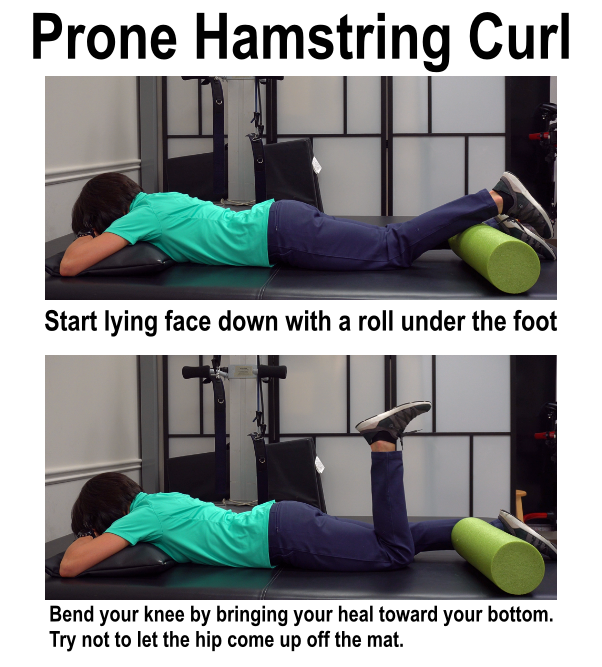
Hip extension w/ knee flexion: This shape/movement is also required for the phase of walking immediately before you swing the leg through. If you are someone who struggles with a “stiff leg” or someone with knee hyperextension, this shape is an important one to practice.
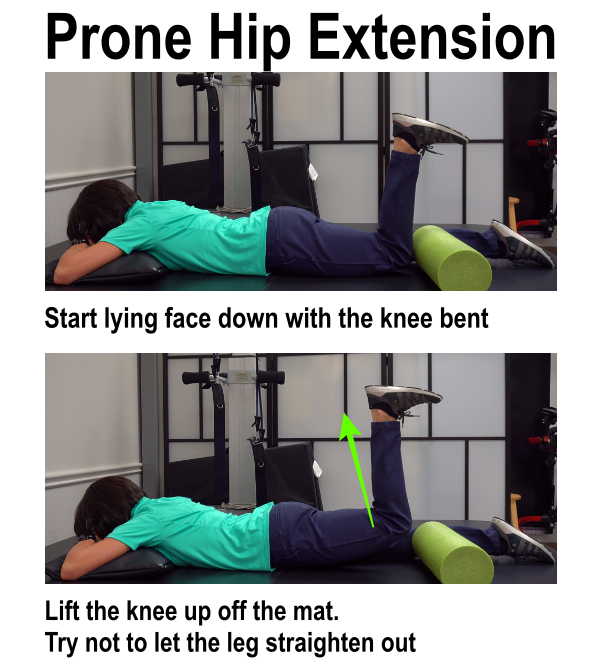
Of note, continue to perform the mat exercises from the early stage of stroke recovery
Sitting Exercises to stand and walk after a stroke
Sitting is a great way to work on balance and posture to stand and walk after a stroke. A common problem is standing and walking after a stroke is that the involved leg is not prepared to accept full body weight. If the leg is not strong enough or has abnormal muscle tone, this might cause an injury to the ankle or cause someone to rely on compensatory strategies. Exercises in sitting can help you to start weightbearing with “proper form”.
Weightbearing with Single Leg Bias
This is a progression from the blog on the early stage of stroke recovery. In this progression we are going to start focusing more on the involved leg. “Biasing” the involved leg will help to prevent compensatory strategies.
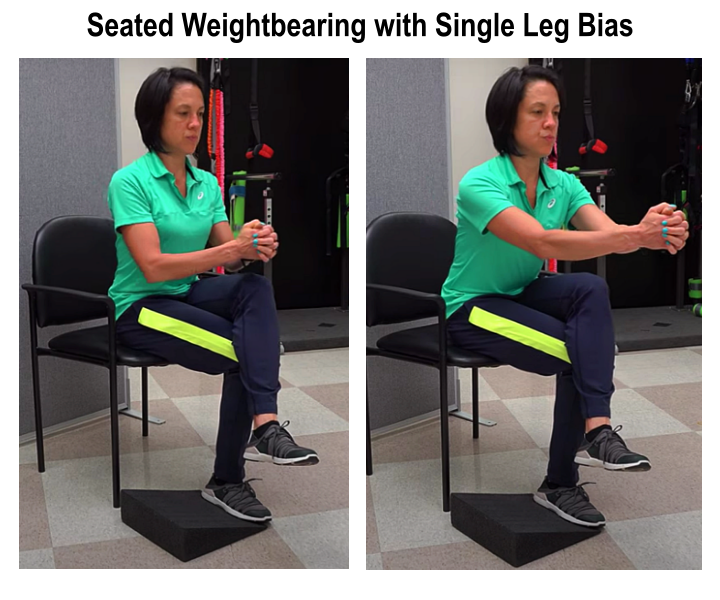
Weightbearing with Single Leg Bias and Trunk Rotation
In this exercise try to emphasize upper body movement while at the same time keeping the lower body very still. Make sure the involved foot stays flat. If it rolls to the side or you feel like you are going to fall toward the involved side you can place a wedge sideways under the foot. If you still feel like you are going to fall, you can place another wedge sideways under the involved hip.
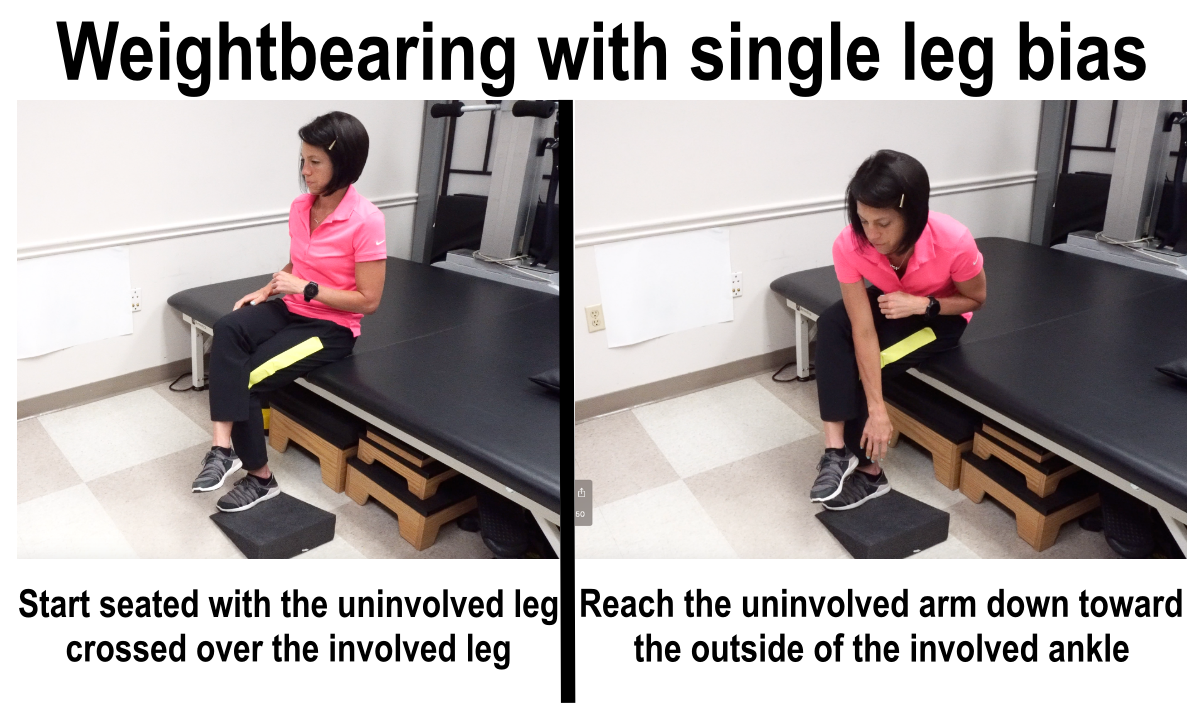
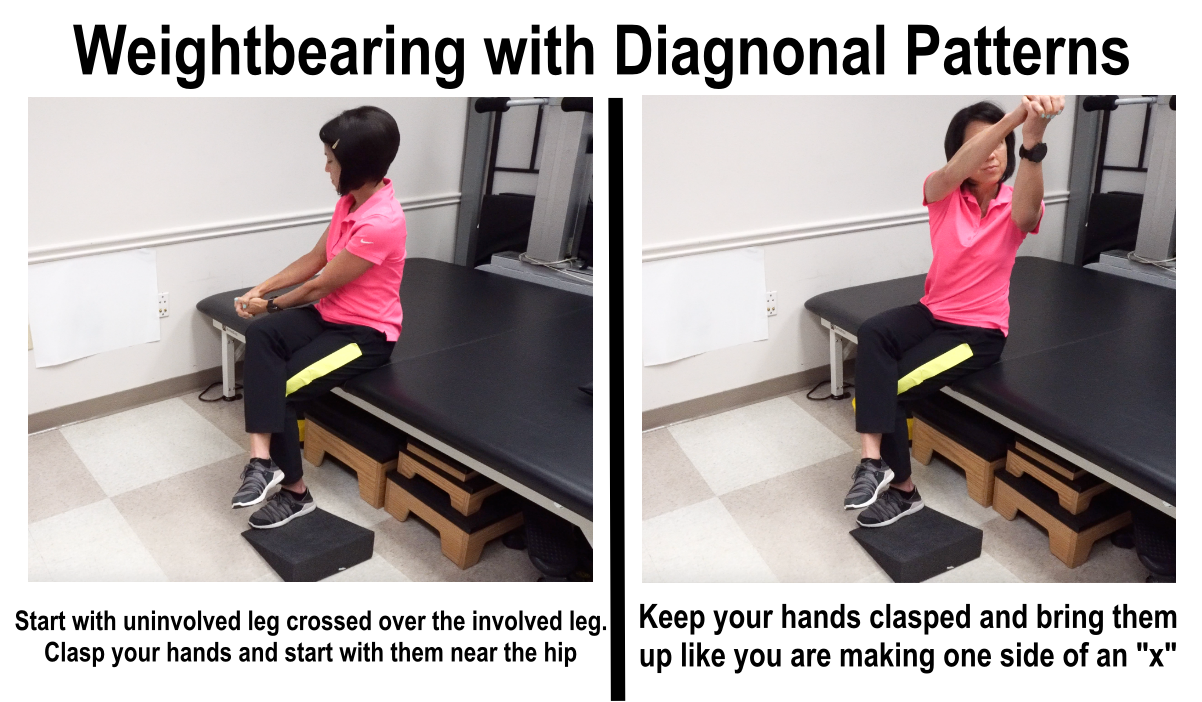
Sit to stand single leg bias
A common problem after a stroke is utilizing a compensatory strategy. A compensatory strategies with walking is when someone keeps all of their body weight centered over the involved leg. It also includes someone who puts a significant amount of body weight support on a one-handed device (a cane or hemiwalker). Sit to stand training with single leg bias will help to unlearn this compensation or to prevent it altogether. Sit to stand with single leg bias (emphasis on the involved leg) can also help to reduce compensatory strategies.
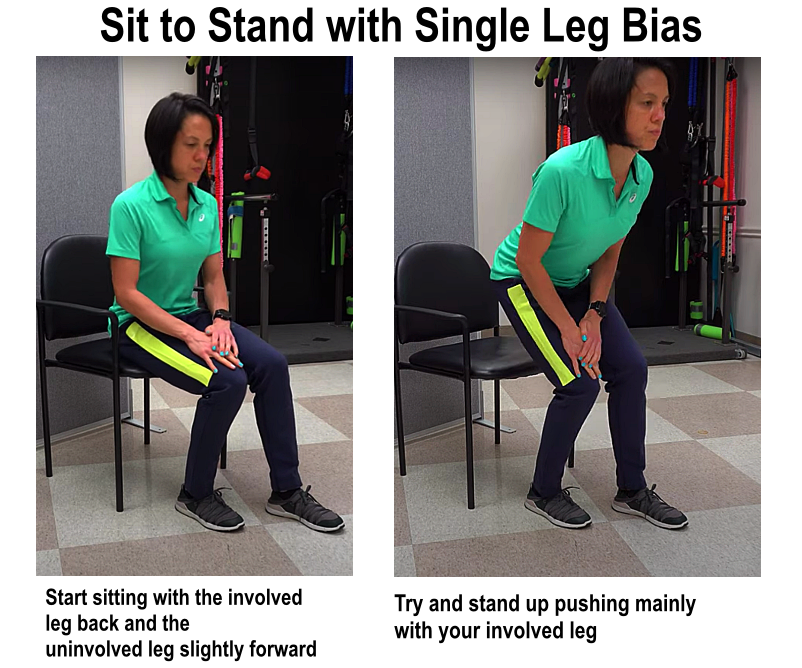
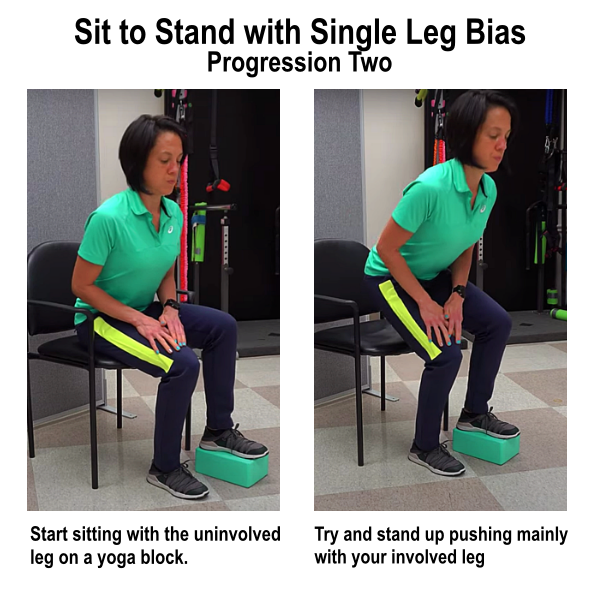
Standing
Standing in this progression is going to focus on learning how to unload the uninvolved leg. Thus, loading the involved leg. This is a critical step to practice to build confidence on the involved leg. A furniture slider allows you to move the uninvolved leg without fully picking that leg up off the ground. This can be used to unload the uninvolved leg without fulling loading the involved leg.
For this exercise put the furniture slider under the toe of the uninvolved leg. Pick up the heel and try sliding the furniture slider out to the side, forward and backward.
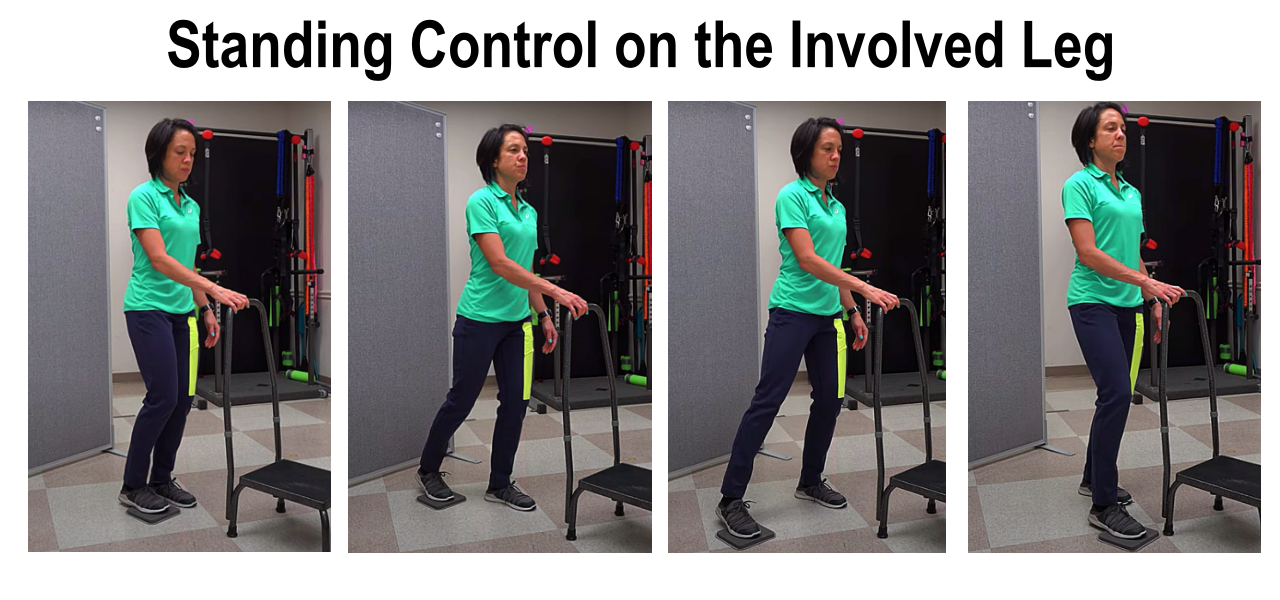
You can add difficulty by adding hip rotation. Hip rotation control is important for turn steps. To do this exercise move the furniture slider in an arc.
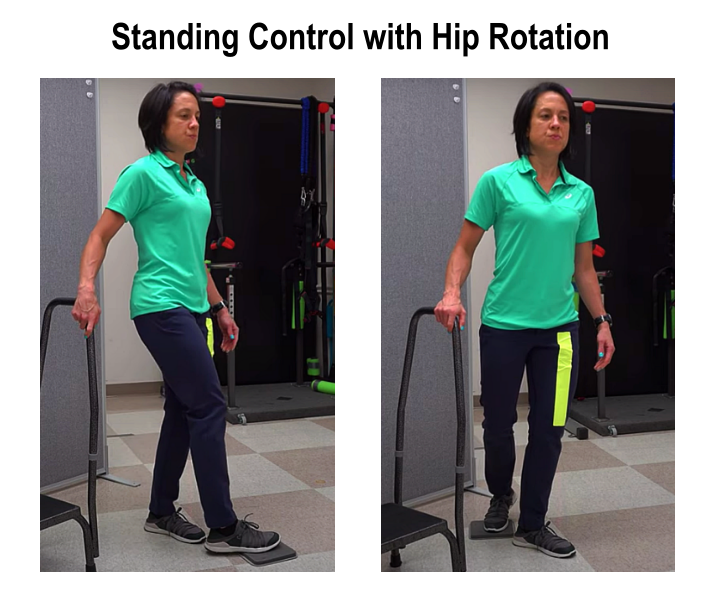
Other Articles you might be interested in:
No Results Found
The page you requested could not be found. Try refining your search, or use the navigation above to locate the post.
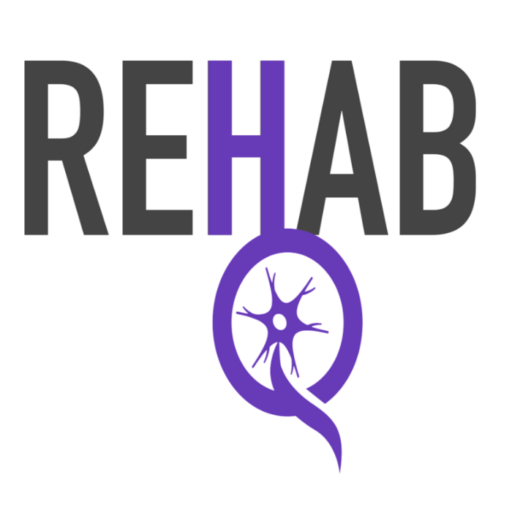
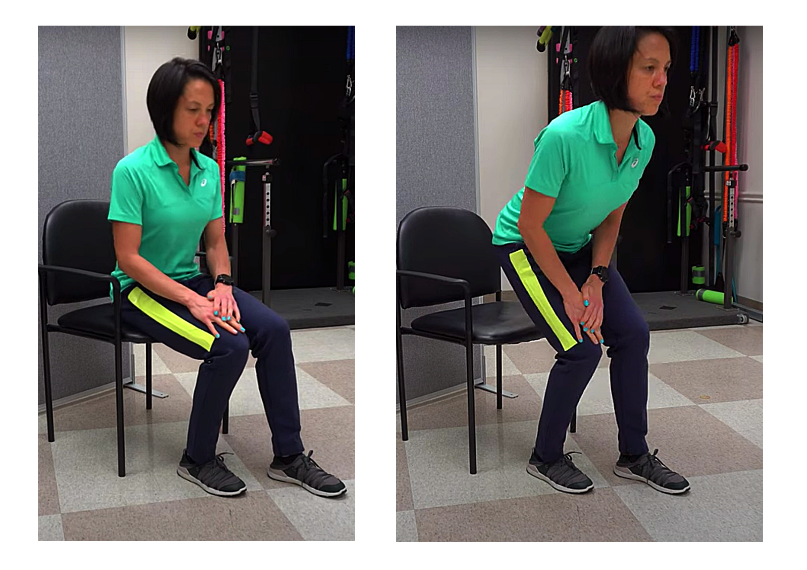
I have difficulty bringing my involved leg forward when walking. I cannot bend or lift my leg in the Prone Hamstring Curl exercise. Is that spasticity? Do you have any suggestions as to how to begin this movement?